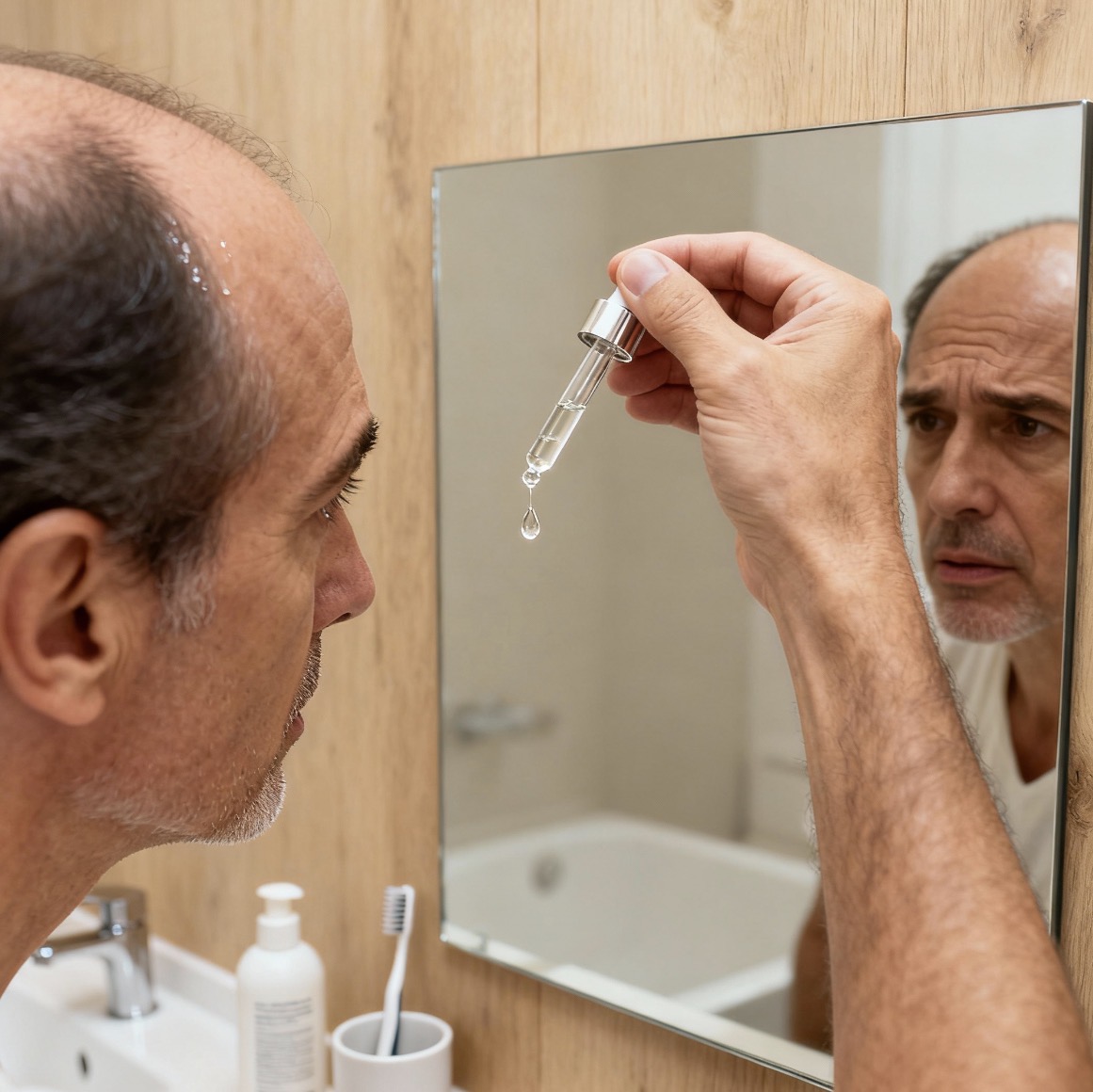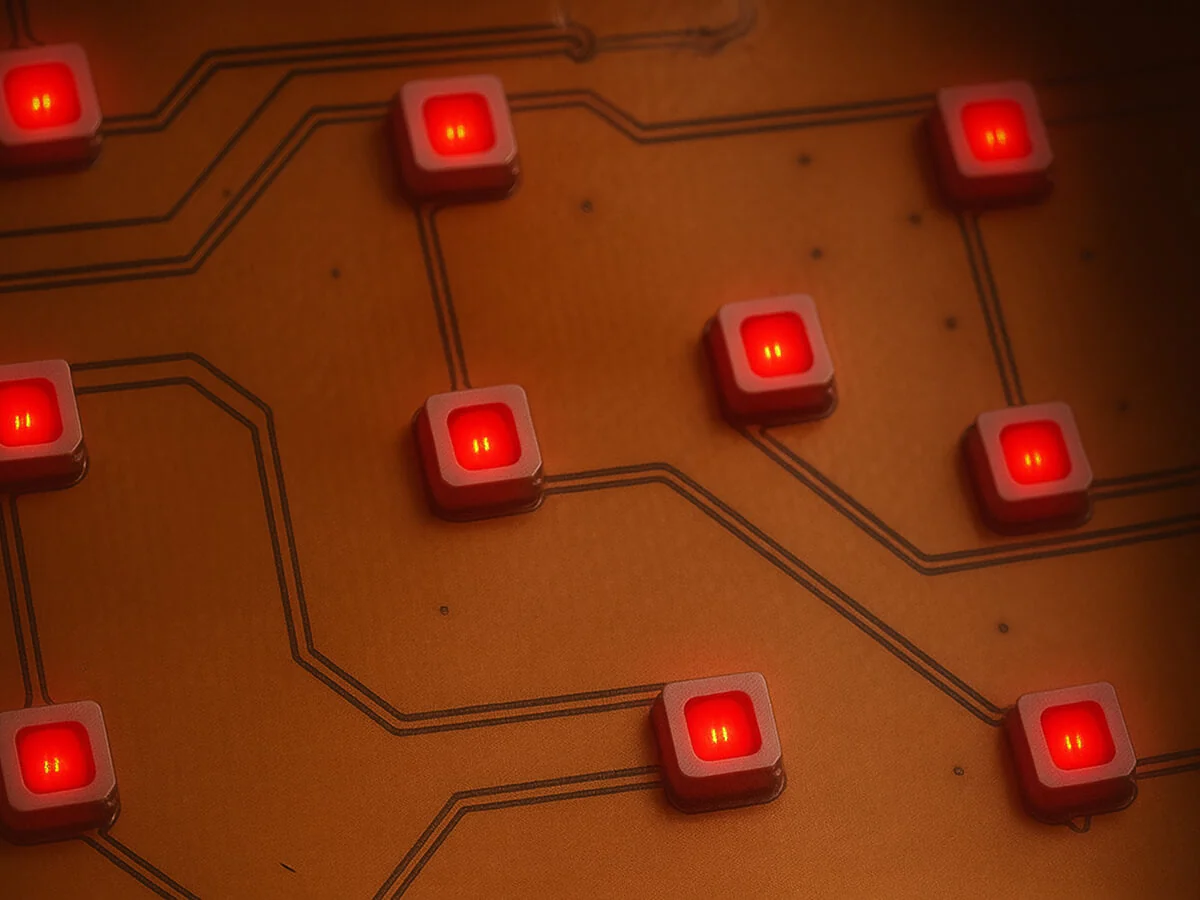Syndicated from: HealthCMI.com
Special acupuncture needles enhance filiform acupuncture to encourage hair regrowth for patients with alopecia (baldness).
Acupuncture produces greater positive patient outcomes than drug therapy for patients with alopecia areata. Specialized acupuncture needle protocols deliver superior patient outcomes over standard acupuncture with herbs. The addition of Qi Xing acupuncture to filiform acupuncture plus herbs significantly increases hair regrowth. Filiform acupuncture combined with Mei Hua acupuncture produces superior patient outcomes over topical minoxidil combined with oral multivitamins. Take a look at two important studies in today’s update, one on generalized baldness and the other on circular patch baldness.
Acupuncture reduces hair loss and promotes hair regrowth for patients with alopecia (baldness). A protocolized investigation by Lin et al. at the Shanghai University of Traditional Chinese Medicine determined that administering acupuncture with the Qi Xing (seven star) needle increases the rate of positive patient outcomes. Patients receiving only standard acupuncture and Chinese herbal medicine had an 84.4% total effective rate. However, adding the Qi Xing needle protocol increased the total effective rate to 90.9%. Moreover, patients receiving Qi Xing acupuncture had a 2.62 ℃ increase in temperature of the scalp. The results were measured at the end of the full treatment course. The researchers note that the application of acupuncture and herbs “can efficiently control hair loss and promote hair growth.”
Inclusion criteria for this study included the Traditional Chinese Medicinal (TCM) differential diagnostic pattern differentiation of spleen and stomach damp-heat. In TCM, heat and dampness may lead to obstruction of meridians. For this reason, alopecia patients with heat and dampness in the spleen and stomach typically have obstructed meridians. This impedes qi and blood circulation to the head, leading to hair follicle malnourishment because vital energy and nutrients are not delivered to the hair. Alopecia treatment in TCM focuses on dredging the meridians and improving qi and blood circulation.
The researchers note that scalp acupuncture and Qi Xing needle acupuncture stimulate neurohumoral and endocrine system responses, thereby initiating restoration of sebaceous gland functioning, which is important for hair health. Additionally, the investigators cite research demonstrating that skin surface temperature is related to local blood circulation. Based on that data, skin temperature was employed as a marker to quantify blood circulation changes to the scalp. The Qi Xing acupuncture protocol caused a 2.62 ℃ rise in scalp temperature.
A total of 65 patients with alopecia due to damp-heat in the spleen and stomach were studied. They were randomly split into 2 groups: treatment group, control group (33 patients in the treatment group, 32 patients in the control group). The control group received standard acupuncture therapy and traditional Chinese herbal medicine. The treatment group received the same treatments with the addition of Qi Xing needle acupuncture.
Qi Xing needle acupuncture was applied to local areas of hair loss. The Kou Ci (tapping) technique was used with consistent and even pressure. The force of tapping was adjusted according to individual skin conditions. Tapping lasted until the treated area was visibly flushed without any external bleeding. Next, the Shengfa acupoints on both sides of the head were tapped 18 times. The Shengfa acupoints are located along the straight path between Fengfu (GV16) and Fengchi (GB20). Treatment was conducted twice a week by an acupuncturist and self-administered by patients once per week. One full treatment course was comprised of 12 weeks of patient care. For standard filiform acupuncture, the primary acupoints were the following:
- Baihui (GV20)
- Touwei (ST8)
- Shuaigu (GB8)
- Tongtian (BL7)
- Fengchi (GB20)
- Quchi (LI11)
- Hegu (LI4)
- Zhongwan (CV12)
- Tianshu (ST25)
- Xuehai (SP10)
- Taichong (LV3)
- Zusanli (ST36)
- Fenglong (ST40)
- Sanyinjiao (SP6)
Additional acupoints were selected based on individual symptoms. For excessive scalp oiliness, the following point were added:
- Shangxing (GV23)
For scalp itching, the following point were added:
- Dazhui (GV14)
For large-scale hair loss, the following point were added:
- Ashi
Depending on the acupoint, needles were manipulated using either the Bu (tonify) or Xie (attenuate) technique. For scalp acupoints, needles were manipulated until the patient reported a deqi sensation. A needle retention time of 15 minutes was observed. The traditional herbal decoction included the following ingredients:
- He Shou Wu (15 g)
- Ce Bai Ye (15 g)
- Fu Ling (15 g)
- Bai Zhu (15 g)
- Sang Bai Pi (15 g)
- Huang Lian (6 g)
- Wu Zhu Yu (2 g)
- Che Qian Zi (30 g)
- Zhi Shi (15 g)
- Pei Lan (15 g)
- Gan Cao (6 g)
The ingredients were brewed in 400 ml of water. The resulting herbal decoction was consumed at a warm temperature in 2 portions per day, 1 hour after breakfast and dinner respectively. Treatments were administered every day for 12 weeks. Throughout the treatment period, patients were advised to adhere to a bland diet and to avoid spicy and other exacerbating foods. Treatment efficacy was evaluated according to the TCM Clinical Research Guidelines by the Ministry of Health of the People’s Republic of China. There were 4 tiers of efficacy:
- Recovery: Shedding of hair ceased. Complete regrowth of new hair. Treatment effective rate of ≥95%.
- Significantly effective: Shedding of hair ceased; ≥70% hair regrowth. Treatment effective rate between 70% – 94%.
- Effective: Shedding of hair ceased; 30% – 69% hair regrowth. Treatment effective rate between 35% to 69%.
- Ineffective: Shedding of hair persists; less than 30% hair regrowth. Treatment effective rate less than 35%.
The research of Lin et al. indicates that adding Qi Xing acupuncture to standard acupuncture and herbal medicine treatments produces greater positive patient outcomes for patients with alopecia in cases of spleen and stomach damp-heat. The addition of the Qi Xing (seven star) needle protocol produced a 90.9% total effective rate. Acupuncture and herbs absent the Qi Xing protocol achieved an 84.4% total effective ra te.
te.
Research produced by Xu at the Guangdong Second Hospital of Traditional Chinese Medicine contains similar findings noting that “acupuncture treatment for alopecia areata has an obvious curative effect.” Alopecia areata is baldness that occurs in round patches. In the study, acupuncture outperformed drug therapy consisting of topical minoxidil and oral multivitamins. Minoxidil, known by the trade name Rogaine®, is used orally for the treatment of hypertension and topically for promoting hair growth. The acupuncture protocol used in the study had a higher effective rate and lower relapse rate than minoxidil plus multivitamins. Xu comments that acupuncture “significantly improves the immunological indices in patients, which is probably one of the therapeutic mechanisms.”
Alopecia patients who received acupuncture therapy achieved a 90% total effective rate whereas patients who received drug therapy (minoxidil plus multivitamins) achieved a 60% total effective rate. In addition, 3 months after completion of treatments, the acupuncture group reported only 3 cases of relapse (10% relapse rate) and the drug therapy group reported 11 cases (36.67% relapse rate).
For this study, 60 subjects with alopecia areata were evenly and randomly divided into 2 groups: treatment group, control group. The treatment group underwent localized Mei Hua (plum blossom) needle acupuncture and filiform needle acupuncture. The control group received minoxidil plus multivitamins.
Mei Hua needle acupuncture was applied to the balding regions of the scalp. The patient first assumed a seated or supine position. The Mei Hua needle was then disinfected. Subsequently, the acupuncturist applied the tapping technique in a repeated and quick succession, starting from the edge of the afflicted area and moving towards the center in a circular clockwise manner. The treatment lasted for 2 – 3 minutes until localized flushing and slight bleeding was observed. Treatment was conducted every other day. For filiform needle acupuncture, acupoints were selected based on individual symptoms. For blood heat and excess wind, the Xie needle manipulation technique was used on the following acupoints:
- Fengchi (GB20)
- Quchi (LI11)
- Xuehai (SP10)
For a weak liver and kidney, the Bu manipulation technique was used on the following acupuncture points:
- Mingmen (GV4)
- Taixi (KD3)
- Ganshu (BL18)
- Shenshu (BL23)
For weak qi and blood circulation, the Bu manipulation technique was used on the following acupoints:
- Qihai (CV6)
- Xuehai (SP10)
- Zusanli (ST36)
For poor blood circulation, the Xie manipulation technique was used on the following acupoints:
- Geshu (BL17)
- Taichong (LV3)
- Xuehai (SP10)
After skin disinfection, 1.5 inch disposable stainless steel filiform acupuncture needles were each inserted into the above acupoints per diagnostic parameter. A needle retention time of 20 minutes was observed. Treatment was conducted once daily for 30 consecutive days to complete one entire treatment course. The medications for the control group comprised the following and were also administered for 30 consecutive days:
- External application of 5% minoxidil tincture (1 ml) on afflicted scalp areas, twice per day.
- Orally administered multivitamin formula.
The total treatment effective rate was evaluated according to the Chinese Medicine Clinical Research Guidelines and categorized into 4 tiers: recovery, significantly effective, effective and ineffective. A follow-up was done 3 months after treatment completion to record cases of relapse. A relapse was defined as the reoccurrence of alopecia areata in the original scalp area or hair loss in the surrounding scalp.
The acupuncture treatment group responded with a much higher total treatment effective rate and lower relapse rate than the drug therapy group. Acupuncture produced a 90% total effective rate and drug therapy (minoxidil plus multivitamins) achieved a 60% total effective rate. The aforementioned studies document the success of acupuncture in treating alopecia. The results show that acupuncture is an effective procedure for restoring hair health.
References:
Xu K. (2015). Clinical Observation on Acupuncture Treatment for Alopecia Areata. Journal of Clinical Acupuncture and Moxibustion. 31(2).
Lin KR, Yun AS & Jiang YF. (2014). Therapeutic Observation of Seven-star Needle plus Acupuncture-medication for Alopecia Due to Heat and Dampness in Spleen and Stomach. Shanghai Journal of Acupuncture and Moxibustion. 33(9).
Burton AC.Temperature of skin;measllremem and use as index of peripheral blood flow





